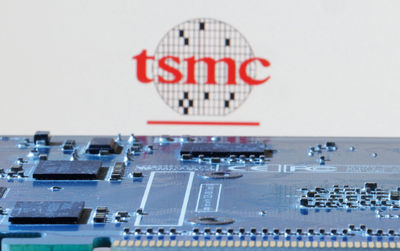John Wu

You own a startup, or an office building in Manhattan, and you’ve heard a lot of buzz about turning your asset into a security token. You likely have many questions, such as “What is a security token?”, “Why should I use a security token?”, and “How do I do that?”. I am going to help answer those questions and explain why issuing a security token is just a faster, more modern, and more valuable extension of a traditional security issuance.
What is a security token?A “security token” is legally identical to a traditional security. The only difference between a security and a security token is the manner in which ownership is recorded. Simply put, a security token is a security that has been turned into a digital asset on a blockchain. If that sounds foreign to you, take a look at this helpful primer put together by Deloitte that explains the basics of blockchain technology.
To give a quick overview: a blockchain is a permanent ledger of transactions shared across a network of computers (nodes). In order for a transaction to be added to the ledger, it must be verified by other members of the network, after which it is stored in an entry “block” at the end of a sequence “chain” of all previous blocks. Because of the nature of how data is verified and stored on the blockchain, there are a couple characteristics that make it an ideal mechanism for recording and transferring ownership of assets:
It is trustless ― because the ledger is shared between all nodes in the network, there is no single party responsible for honestly entering each entry. Instead, the members must work together to come to a consensus, eliminating the need to place trust in a central authority. It is transparent and immutable ― Records of all transactions are stored on the “chain” of previous blocks. These cannot be changed. By using blockchain, there is no longer a need for all parties to maintain their own ledgers: instead, they can use the shared record of the blockchain.I heard a useful analogy for the tokenization of assets from Harbor CEO, Josh Stein. He equates the difference between a security token and a security to the difference between email and snail mail. Before email came along, written correspondence was slow and inefficient. Because of the effort that went into sending a letter, people simply did not send them that frequently. Not only that, but the recipient of a letter had to wait several days before the message got to them.
Email has made communication more efficient and more common. Think of all of the emails you send. For how many of them would you have taken the time to write a letter, address an envelope, put the letter in the envelope, lick, seal, stamp, and send? Tokenization offers the promise of both a more efficient securities market, and a larger and more active securities market. Much like the evolution from snail mail to email caused written communication to be more efficient and more common, tokenizing securities will make trading more frequent and more efficient, and will make more asset classes accessible to investors.
Why should issuers use a security token?There are many advantages that issuing a security token has over a traditional security. The primary benefits can be broken down into transparency, automated settlement, fractionalization, global availability, and liquidity.
Transparency:The transparent nature of each transaction means that the blockchain serves as a public record of ownership for your security token. Currently, private issuers are required to maintain a capitalization table recording the ownership of their security, which can be expensive. Companies are also only permitted to have a maximum of 2,000 shareholders before they are required to go public. Because of this, most private companies restrict their shareholders from transferring shares, which harms investors and employees by denying them liquidity. Through tokenization, it is possible to code regulations into the token, allowing issuers to authorize trading without having to worry about running afoul of SEC regulations. Issuing tokens instead of certificates eliminates recordkeeping costs and increases shareholder liquidity.
Automated Settlement:Settling trades via blockchain reduces transaction costs. In a traditional securities transaction, there are several parties responsible for acting as a trusted intermediary to help settle the trade. For instance, central counterparty clearing acts as a trusted third party in the middle of trades to protect against either party defaulting. It is impossible to default in a security token trade, as the transaction can only be confirmed if both parties have sufficient funds to cover their obligations. Therefore, there is no need for rent-seeking third parties to participate in the trade.
Tokenization also greatly reduces transaction time. Traditional public equity trades settle T+2. This means that a transaction is confirmed 2 business days after it is initiated. So if you purchase shares on Monday, the transaction is not actually completed until Wednesday. Private equity trades can take anywhere from 30 to 90 days to settle. A security token trade is confirmed as soon as the exchange of tokens is confirmed on the blockchain. Nearly all security tokens are issued on the Ethereum network, and the average time for a block confirmation on Ethereum averages 10 20 seconds, so tokenization reduces settlement by orders of magnitude.
Fractionalization:Let’s go back to that office building in Manhattan. Assume it’s worth $100MM. Trying to sell a hundred-million dollar asset is always going to be difficult, and ultimately results in you selling the asset for less than full value. There are a couple of reasons behind this discount: first, because the number of buyers willing to purchase such a large asset is limited, and second, because buyers understand the illiquid nature of the asset, and are not willing to pay as much for an asset that is difficult to resell. Now imagine you can split up your office building into a million freely tradable shares. Through tokenization, nearly all investors can afford to own a piece of New York real estate, increasing demand, and because the shares are liquid, investors are willing to pay more for each fraction of the real estate. You have just sold the building for more than you would have otherwise, simply because the ownership was tokenized.
Global Availability:Tokenizing your security not only opens up investment opportunities to smaller investors within the US, it also provides easier access to investors of all levels throughout the world. Buying foreign securities in the traditional manner is a complex process. If the securities are even available, they are often offered with layers of costs and obscurity wrapped around them. Through tokenization, your offering can be easily purchased by an investor in China or Belgium, increasing global demand and liquidity.
All of these benefits result in security tokens being more valuable than their traditional counterparts. As I mentioned when looking at the tokenization of the building in Manhattan, increased liquidity often results in an increase in value, because investors are willing to pay more for assets they know can be traded ea

















